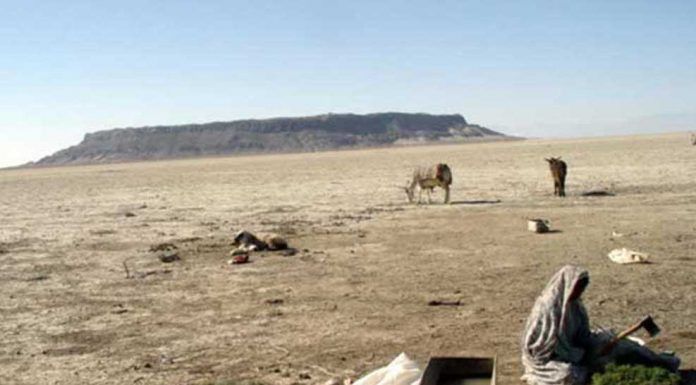Vegetation covering the Zagros Mountains forest steppe has rapidly shrunk in the past 40 years because of water shortage and severe drought, ILNA (Iranian Labor News Agency) has reported citing Isa Kalantari, the head of Iran’s Department of Environment.
“We are using tankers to supply water to the region,” Mr. Kalantari said. “The entire biodiversity of central Zagros is in danger. Many plants and animals will die if we do not protect the marshes and grasslands.”
[aesop_image img=”https://kayhanlife.com/wp-content/uploads/2019/02/Dena2.jpg” panorama=”off” align=”center” lightbox=”off” caption=”(CC BY-SA 3.0). Zagros Mountains. Wikimedia Commons. Author: Vah Hem” captionposition=”center” revealfx=”off” overlay_revealfx=”off”]
The Zagros Mountains forest steppe spans 11 provinces, mainly through the country’s western border, and is home to 400 species of plant and wildlife. With annual rainfall of 800 millimeters, the steppe provides half of the country’s water supply. A wide variety of wildlife, including wolves, leopards, and Persian fallow deer, live in the Zagros mountains.
Kalantari explained: “Many species of plants have died because of a severe drought that has impacted the population of rabbits and black-tailed gazelle which graze in the grasslands. As a result, the number of predators which feed on these herbivores has sharply dropped.”
“Large areas of the Zagros grassland have turned arid in recent years,” Kalantari noted. “We had to use tankers to transport water to these affected areas last summer. Many plants and animals died because of drought. Nature is brutal, and we have been ignoring all of the signs for too long.”
Kalantari said: “We have been using nature’s gift of water, but have not tried to conserve our reservoirs. Our wells have dried up, and agricultural lands have turned arid. The inhabitants of drought-stricken regions have been living with frequent dust storms. Prolonged exposure to airborne dust can lead to chronic breathing and lung problems, and possibly heart disease.”
According to Kalantari, Iran’s renewable water reservoir has depleted by 45 billion cubic meters because while national average rainfall has dropped to 200 millimeters, the volume of the evaporation cycle has risen by three percent.
“The country’s groundwater reservoir is around 20 billion cubic meters, but we use 50 million cubic meters. We have abused nature in the past 30 or 40 years,” Kalantari noted. “Things might have been different if we had cared as much about water as we do about our country’s wildlife.”
Speaking about the dried-up bed of Hamun Wetland, commonly known as Lake Hamun, in the southern province of Sistan and Baluchestan, Kalantari said: “We created four man-made lakes in Zagros County which hold up to 800 million cubic meters of water. These reservoirs supply drinking and agricultural water to the province. We diverted water from Hamun to replenish these four reservoirs which have caused wetlands to dry up. Also, Afghanistan has built a dam which severely limits the volume of water that flows into Hamun.”
The Helmand River flows some 1150 kilometers in Afghanistan before reaching shallow marshes in Sistan wetlands and Lake Hamun. The Afghan-Iran Helmand-River Treaty signed in 1973 determines each country’s rightful claim to the river. However, in August 2018, the dispute between Kabul and Tehran over the Helmand River reached a critical level, after Afghanistan built a dam which Iran claims deprives it of its fair share of the water.
“Two billion cubic meters of water used to flow from the Helmand River into Lake Hamun. Iran’s share of the water is 820 million cubic meters. However, only three million cubic meters of water flowed into Lake Hamun which evaporated in a relatively short time,” Kalantari noted. “Afghanistan and Iran have been both responsible for drying up the Hamun marshes and wetlands. People of Zabul have no source of water anymore.”
Translated from Persian by Fardine Hamidi



